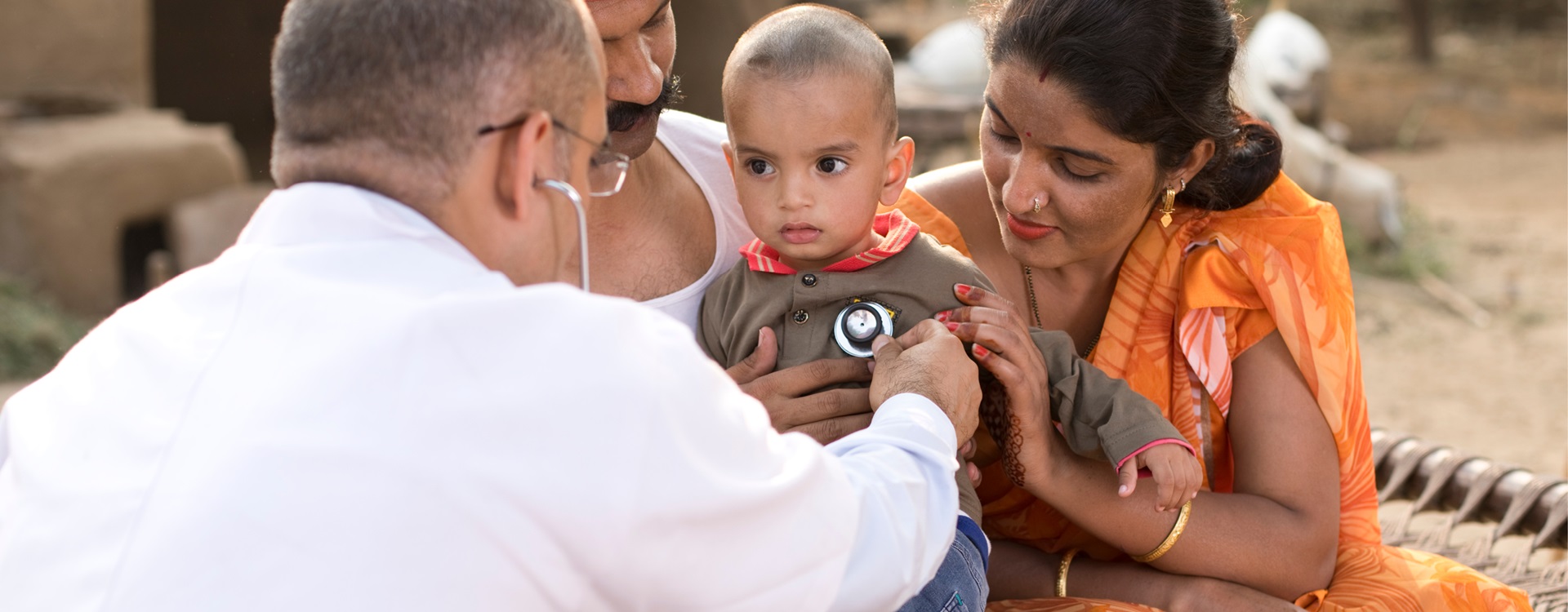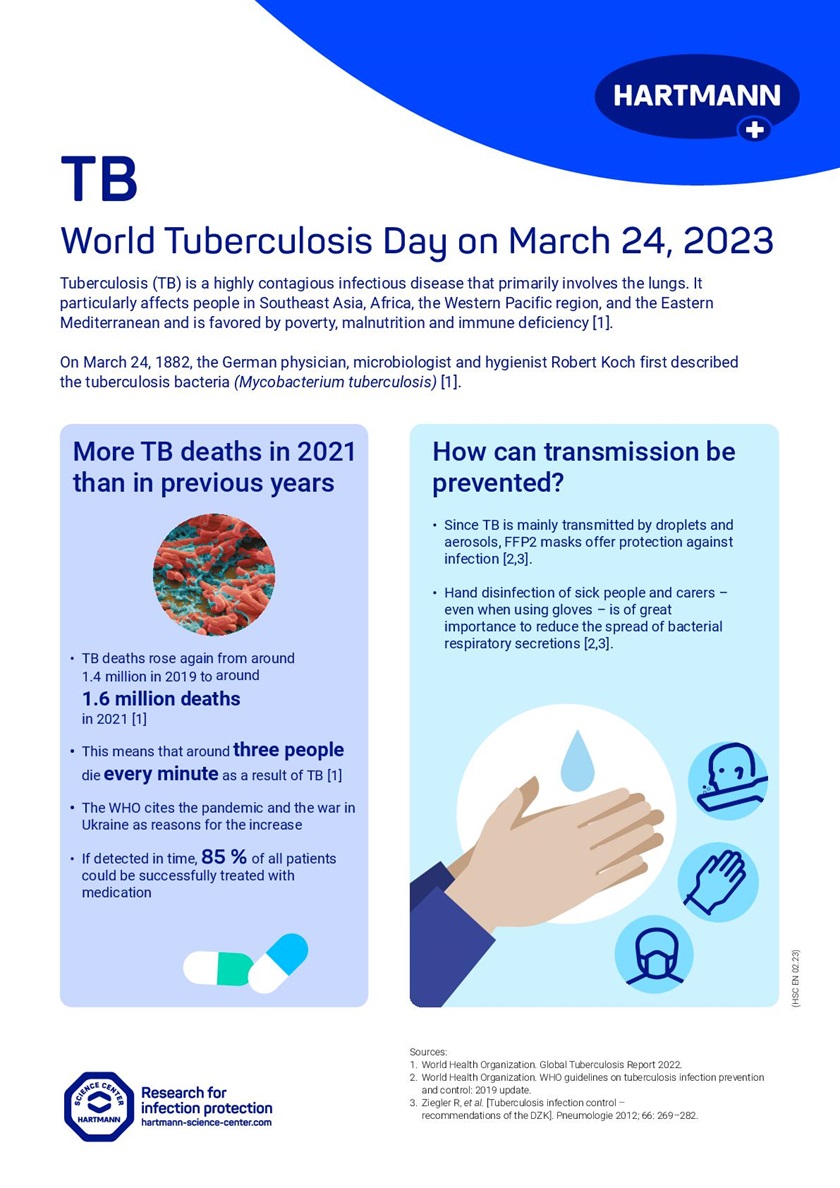Modes of Transmission


Even though tuberculosis (TB) – formerly often referred to as consumption – has plagued mankind for centuries, its causative agent was only identified about 140 years ago. On March 24, 1882, the German physician, microbiologist and hygienist Robert Koch scientifically described the tuberculosis bacteria (Mycobacterium tuberculosis) for the first time. The discovery of the pathogen is celebrated every year on March 24 – World Tuberculosis Day. The World Health Organization (WHO) and the Stop TB Partnership want to raise awareness of the health, social, and economic impact of TB and call for a common fight against the disease.
TB is a highly contagious infectious disease primarily affecting the lungs that is mainly transmitted by droplets and aerosols. TB particularly affects people in Southeast Asia, Africa, the Western Pacific region, and the Eastern Mediterranean, while it is much less common in the Americas and Europe. However, only those infected are contagious in which the infection leads to an active disease. Factors such as poverty, malnutrition, HIV infection, smoking, and diabetes favour the outbreak of the disease, because people with a weakened immune system are less able to keep the pathogen at bay. Despite drug treatment options, TB remains one of the most common and deadliest infectious diseases worldwide. This is due, among other things, to the fact that many of the infected people who require treatment are not treated. In addition, antibiotic resistances are making treatment increasingly difficult.
The WHO estimates that almost 10 million people are newly diagnosed with TB every year. But while deaths have been falling since 2015, they rise again since 2020 – from around 1.4 million in 2019 to around 1.6 million in 2021. This means that around three people die every minute as a result of the disease. The WHO cites the pandemic-related disruptions in healthcare as well as the war in Ukraine as reasons for the increase. The fact that the lower diagnosis rate inevitably leads to undertreatment is particularly tragic in light of the fact that TB – recognised in time – could be successfully treated with medication in 85% of all patients. However, this requires funds for TB programs, which had been redistributed in many places due to the COVID-19 pandemic and were therefore lacking.
Global efforts to fight TB have saved an estimated 66 million lives over the past two decades. With the motto “Yes! We can end TB” of this year’s World Tuberculosis Day, the WHO urges the global community not to reverse these advances. It is now in the hands of political leaders to recognise this urgency, invest resources and re-intensify the fight against the disease. In 2014 and 2015, all member states of the WHO and the United Nations jointly committed themselves to the global goal of ending TB. It is now a matter of fulfilling the obligations, defined as milestones. In addition to investing in research, this also includes fighting poverty and hunger, which promote both the outbreak of the disease and deaths.
We think this is reason enough to utilise the international campaign day of action in order to raise awareness of the disease as well as how to fight and prevent it. Since TB is mainly transmitted by droplets and aerosols, good cough etiquette – i.e., coughing into the hand or elbow followed by hand hygiene – is of great importance in order to reduce the spread of contaminated respiratory secretions. You too can help break the chain of infection with proper hand hygiene. Share your commitment against TB using the hashtags #WorldTuberculosisDay, #MissionInfectionPrevention und #HandHygiene! You can also find campaign materials, such as infographics and web banners, on the campaign website that you can use for your actions.

Sources: